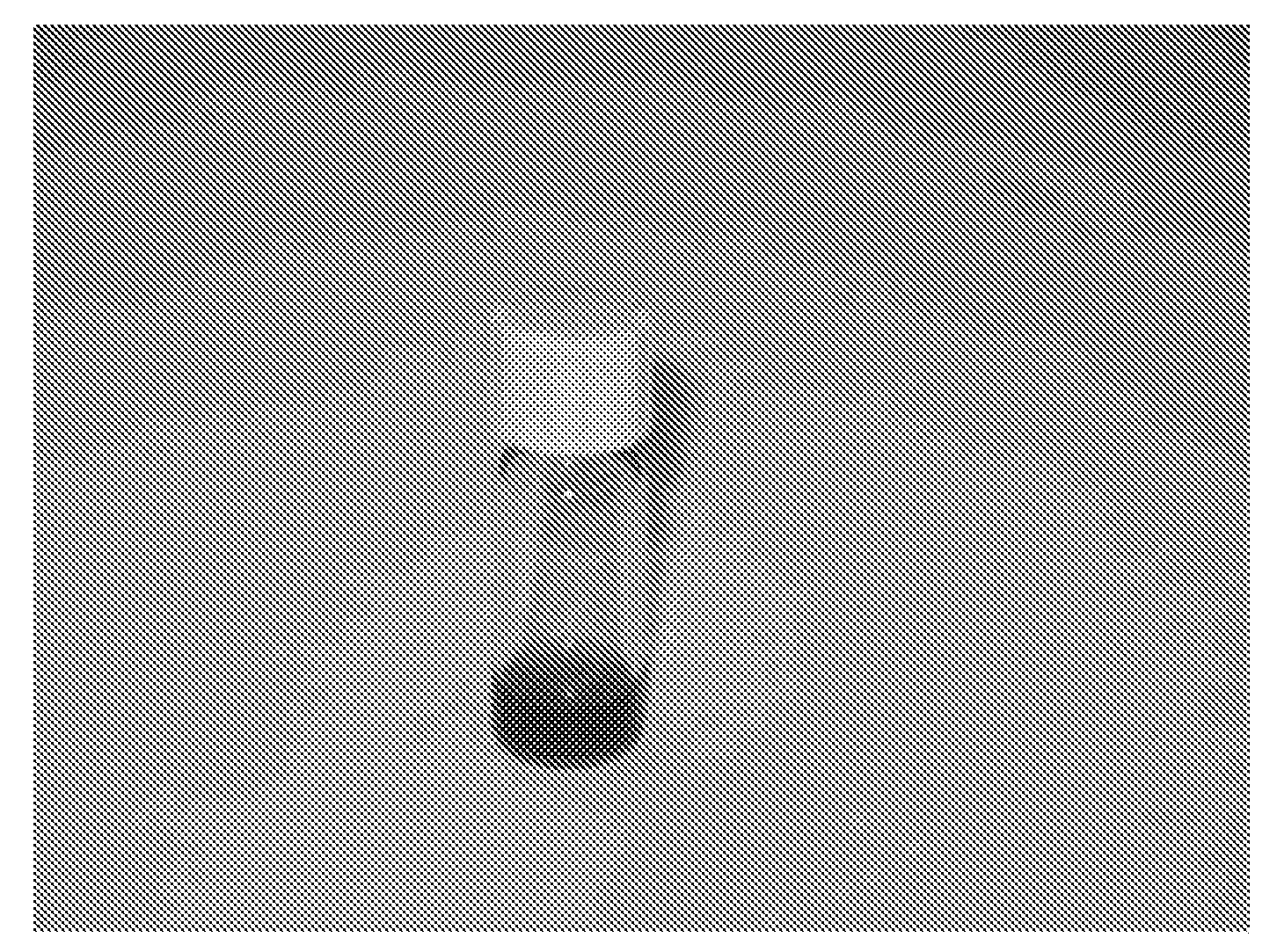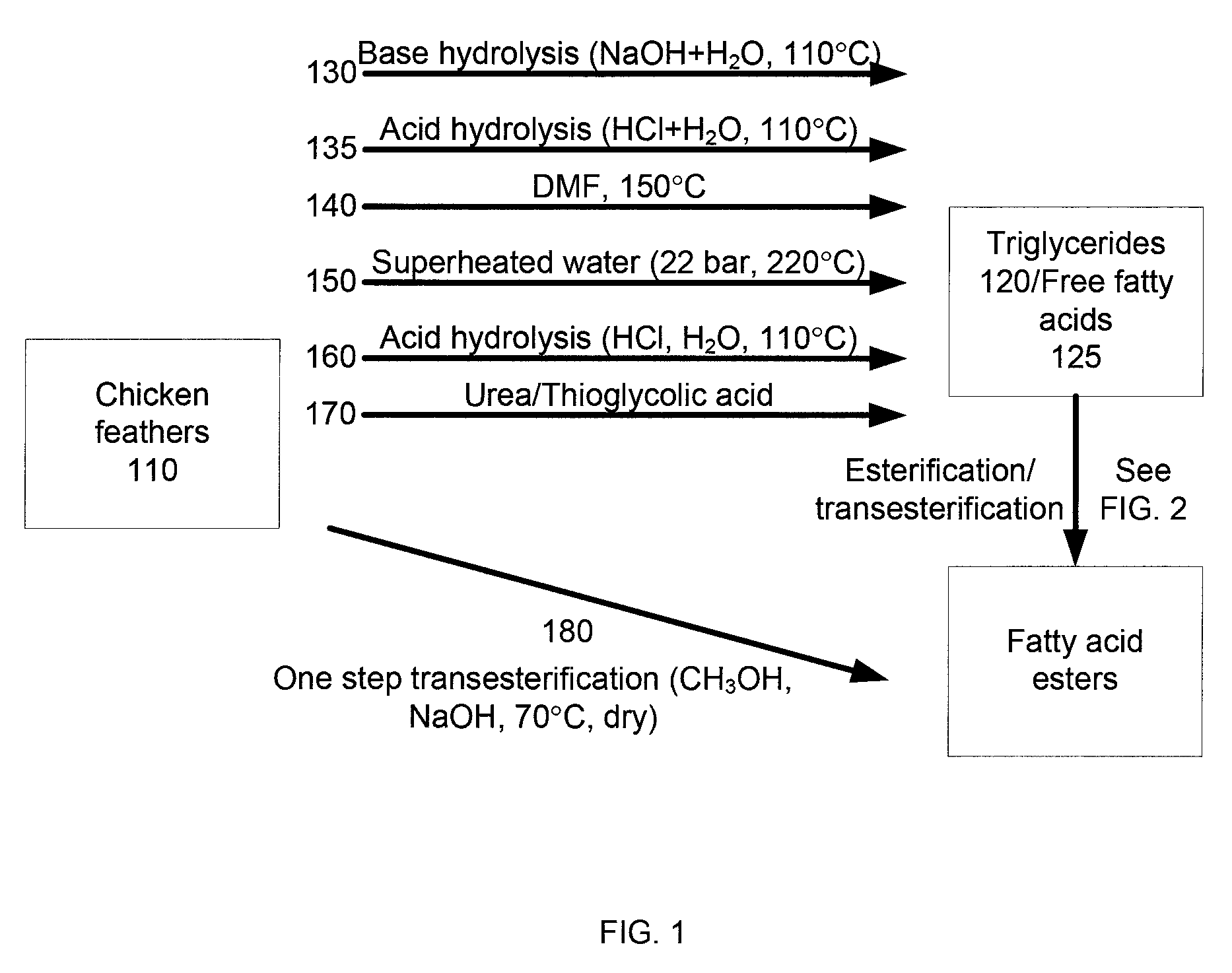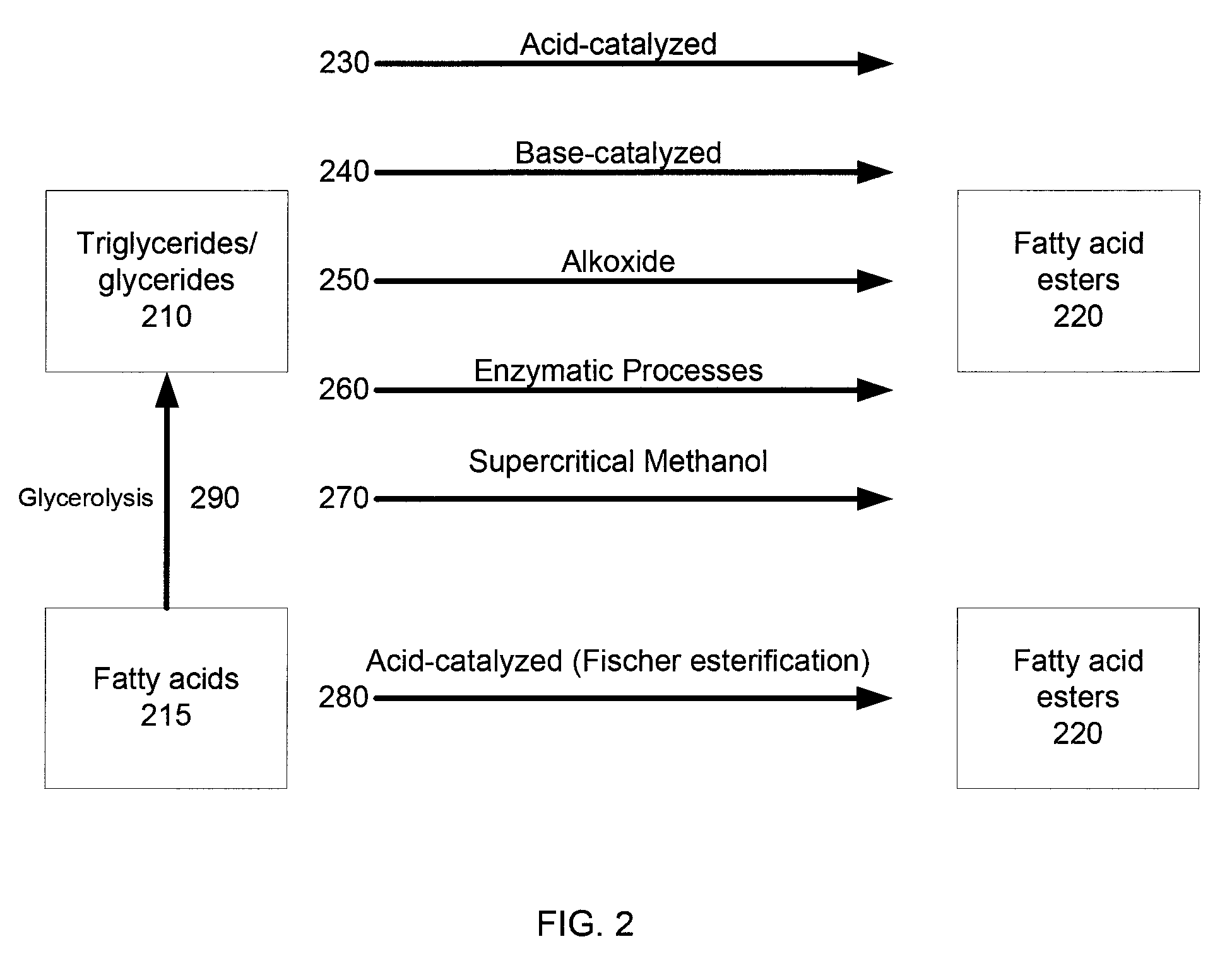Biofuel production methods
- Summary
- Abstract
- Description
- Claims
- Application Information
AI Technical Summary
Benefits of technology
Problems solved by technology
Method used
Image
Examples
example 1
[0070]In the present Example, chicken feathers were crushed in a vibrated mill to produce fine size fibrous materials. The fibrous material was conditioned with NaOH for an extended time at room temperature. The hydrolyzed product was mixed with freshly prepared methoxide (methanol plus NaOH). The mixed product was conditioned for 24 hours. A schematic of the process is shown in FIG. 3.
[0071]Two layers formed after the 24 hour conditioning period. The top fraction was a clear biofuel material corresponding to esterified products. The lower thick layer included glycerin and other substances. The top layer was analyzed using High Pressure Liquid Chromatography (HPLC) to determine the quality of biofuel fraction. The resulting chromatogram, shown in FIG. 4, illustrates that the biodiesel was of good quality.
example 2
[0072]In this Example, chicken feathers were mixed in a pressurized autoclave in the presence of water and NaOH. The mixed product was heated at 60-70° C. (external temperature 200-300° C.) for 20-30 minutes. After that time, the hydrolyzed and dissolved product was mixed with sodium methoxide (methanol and NaOH) for several hours at 60-70° C. The mixture was then cooled to room temperature. A good and high quality biofuel (esterified product) was noticed. The presence of biofuel was confirmed by HPLC.
example 3
[0073]In this Example chicken feathers were mixed with methanol to which sodium hydroxide was added. The mixture was conditioned for several hours. After conditioning, sodium methoxide was added. The resulting mixture was mixed for a long time at 25-60° C. The product was then cooled to room temperature. A clean biofuel layer (esterified product) and glycerin layer were observed. The biofuel layer was analyzed by HPLC, confirming the formation of a high quality biofuel oil.
PUM
 Login to View More
Login to View More Abstract
Description
Claims
Application Information
 Login to View More
Login to View More - R&D
- Intellectual Property
- Life Sciences
- Materials
- Tech Scout
- Unparalleled Data Quality
- Higher Quality Content
- 60% Fewer Hallucinations
Browse by: Latest US Patents, China's latest patents, Technical Efficacy Thesaurus, Application Domain, Technology Topic, Popular Technical Reports.
© 2025 PatSnap. All rights reserved.Legal|Privacy policy|Modern Slavery Act Transparency Statement|Sitemap|About US| Contact US: help@patsnap.com



